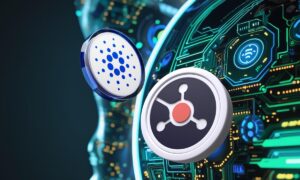By Preity Gupta | Published on April 1st, 2024 | TechBullion
As we step into the second quarter of 2024, the intersection of artificial intelligence (AI) and cybersecurity is witnessing groundbreaking shifts. While 2023 laid the foundation with large language models, threat detection automation, and AI-enhanced phishing simulations, 2024 is already showing signs of transformative progress. The fusion of predictive AI and security frameworks is not only reshaping how organizations protect digital assets but also redefining how cyber threats are anticipated and neutralized.
1. AI-Powered Autonomous Cyber Defense
One of the most anticipated advancements is the evolution of AI-driven autonomous defense systems. These systems, unlike traditional Security Information and Event Management (SIEM) platforms, don’t just respond to known threats — they predict, adapt, and act in real time. Leveraging reinforcement learning, these models are being trained to identify early indicators of attacks such as polymorphic malware, insider threats, and AI-generated phishing attempts.
Companies like Darktrace and SentinelOne have already hinted at next-gen models that learn from attack patterns globally and deploy defensive measures within milliseconds. This evolution marks a shift from reactive to proactive cybersecurity.
2. Secure Multi-Agent AI Collaboration
With generative AI applications like ChatGPT and Copilot becoming common in workplaces, the need for secure collaboration among AI agents is growing. 2024 is likely to see protocols that ensure authenticated, encrypted, and policy-compliant AI-to-AI communications. These advancements will protect against prompt injection attacks, unauthorized data extraction, and cross-application vulnerabilities.
The OpenAI and Microsoft alliance is reportedly working on models that not only perform tasks but also verify each other’s decisions, building a level of accountability in AI workflows.
3. AI Governance and Regulatory-Ready Security Models
With regulations like the EU AI Act and the US AI Executive Order setting global standards, security teams are now integrating AI governance as a security layer. Companies are building auditable AI pipelines, bias-detection modules, and traceability logs that align with legal frameworks. This “compliance-by-design” approach ensures security is not just a technical function but also a regulatory necessity.
2024 is also witnessing the rise of AI Model Integrity Monitoring (AIMIM) platforms that continuously assess model behavior for adversarial inputs, unauthorized fine-tuning, and toxic outputs.
4. Quantum-Resilient AI Encryption
The conversation around quantum computing and its threat to traditional encryption has triggered rapid development in quantum-resilient AI systems. AI models are being designed to operate within post-quantum cryptographic frameworks. IBM, Google, and NIST are collaborating to create standards that protect AI training data, inference requests, and model weights against future quantum threats.
Looking Ahead
AI is no longer just a tool for automation — it’s becoming a critical actor in the security landscape. But as capabilities rise, so do risks. 2024 is shaping up to be the year where “secure by AI” and “secure from AI” become two sides of the same strategic coin. Forward-thinking organizations must embrace innovation while embedding ethics, governance, and resilience into their AI security roadmap.
The next wave of cyber defense won’t just be smart — it will be autonomous, collaborative, compliant, and quantum-resilient.
Preity Gupta is a Cybersecurity Multi-Cloud Advisor, author of “Cost Savvy Secure Cloud,” and founder of SecureBiz, empowering businesses to build resilient, secure cloud architectures.































